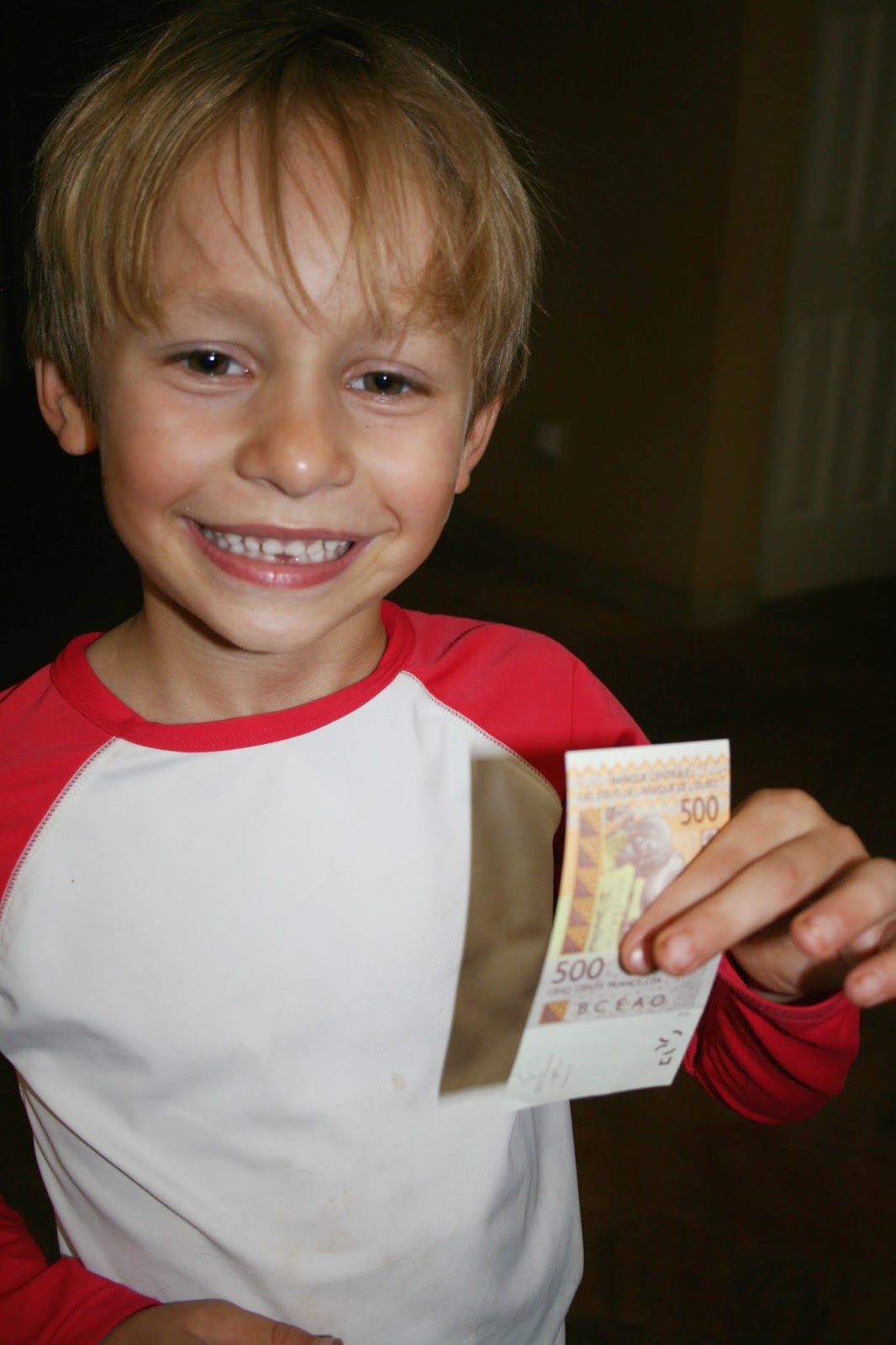A few of my family members, mainly my mom, have been asking
for weeks what a “normal day” looks like for me and the kids. So, here goes:
6:00am – I wake, hopefully before the kids, but the sun
comes up around 6 too, so we’re usually all up soon. I think the kids aren’t sleeping in much because it is usually pretty hot in their room, and once they wake, they are up
for good. Nate works out at the pool
with a few guys some mornings, and on the other mornings, I try to go for a
quick run (in an athletic skirt!! because we are in view of the hospital and women don't normally wear pants in this part of Togo) before the sun is too intense.
7:30 – Nate heads to the hospital for morning rounds
followed by scheduled surgeries. The
boys walk to the sheep pasture to feed their beloved sheep.
8:00 – Kids start on schoolwork and I do a quick Bible time
with them. A few mornings a week,
Denise, a Togolese young woman, comes to our house to help with some cooking
and cleaning. She is wonderful! Her English is limited, and my French is even
more limited, so it can be a challenge to let her know what I would like her to
help with each day. Typically, she
sweeps the floor (the dust is unbelievable and builds up like crazy when the
windows are open), washes dishes, washes and bleaches vegetables and makes a
Togolese tomato and peanut sauce for us.
9:00 – I take Truman and Fiona out to swing or play for a
break.
10:00 – The older boys need some help with school, so I
distract Fiona with a tub of water on the back porch and she plays while I help
Avery and Finley with their questions and work with Truman on his sight words
and reading.
11:30 – The kids are pretty much finished with their
schoolwork, so they read or play ipad games while I figure out lunch. Even heating up leftovers for lunch can be an
ordeal with multiple pots and pans on the stove. I miss my microwave!
12:30 – Nate comes home for lunch and usually has an hour or
so before he heads back to the hospital for afternoon clinic. We are staying a couple hundred yards from the
hospital, so it easy for him to go back and forth.
2:00 – While Fiona is napping, I try to prep dinner so we
can be outside late afternoon when the temperatures cool a little. I catch up on email if the internet is
working and sometimes read a book aloud to the older kids. Avery and Finn let the sheep out to graze and
keep an eye on them so they don’t end up inside the hospital. The boys have also done way more reading here
than they would at home. There is a
small “library” at one of the nearby houses, books donated from all kinds of
places, and the kids have read some really great books.
4:00 – We head to the pool.
It is tough to be outside during the middle of the day, so we try to
maximize our time outside from 4-6pm.
The other missionary families who live in town or on the hospital compound are
usually there as well, so the kids have friends to swim with. There are twin 12-year-old girls, Abby and
Ali, who love Fiona and are pretty amazing babysitters to her. She usually prefers them over me when they
are around.
 |
| Abby handmade this kitty shirt for Fiona...she is so sweet!! |
5:30 – Nate is hopefully home to play
baseball with the boys. They love this
time with him.
6:00 – Dinner, then maybe a game or movie or ping pong at
the guesthouse. Nate is on call every
other day, so he is sometimes at the hospital if patients aren’t doing well or
a new surgical patient comes in. He
operates after normal work hours only a few times a week, but the surgical
volume is quickly picking up as the word gets out about the quality healthcare
offered here.
8:30 – Boys head to bed and I spend at least an hour grading their work from the day and assigning work for the following day. This has been more time-consuming than I
expected. Not having true homeschool
curriculum or teacher’s manuals means I am reading the textbook to make sure
Avery has all the facts straight about the French & Indian War. At least I have learned a few things myself,
including how to do that crazy lattice multiplication method that is so
head-scratching to all parents of 3rd graders!
So that's my life the past couple months. The routine isn't exciting, but we have had some pretty memorable times as a family that will definitely be laughed about for years to come. Because we are so isolated and recreation options are severely limited, we have spent a lot of time just...together, talking about patients at the hospital and what God is doing in this area of the world. I feel like I know each of the boys better than I did a few months ago and going through their schoolwork with them each day has given me insight to their strengths and gifts. These benefits help me keep perspective when I am dripping in sweat. :)














































